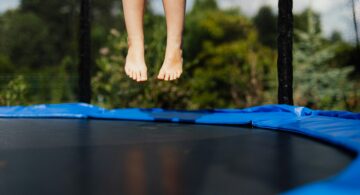Osteoporosis: Breaking Your Chances
Osteoporosis is becoming nothing short of an epidemic. Nearly 10 million Americans have osteoporosis and another 18 million are at high risk of developing it. Here’s a scary statistic: Women over the age of 50 have a one in two chance of an osteoporosis related fracture! These numbers are expected to continue to climb unless we really begin to actively treat and prevent bone loss.
Big Pharma is taking in major profits from osteoporosis. Drugs like Fosamax and Boniva are recommended for treatment. The problem is that these drugs don’t truly help, but rather increase your risk of a fracture. They also have a whole list of other bad side effects. Some Fosamax and Boniva users are dealing with gastrointestinal issues including esophageal cancer, skin rashes and even joint pain. These drugs work by killing cells in your bone. Although the result of using these drugs is denser, bigger bone, it is not stronger bone. Because the bones are still weak, fractures, including hip fractures, have been occurring among those using these supposed bone-building drugs.
Two Kinds of Osteoporosis
Osteoporosis is a debilitating condition in which bone density decreases to the point that it causes weak, porous, and fragile bones. People who have osteoporosis have a high risk of bone breaks and fractures. Although most people are familiar with osteoporosis, they may not realize that there are two forms.
The two types of Osteoporosis are:
- Type I or Primary Osteoporosis
This type comes on very suddenly in postmenopausal women because of the rapid drop in estrogen levels. This lack of estrogen causes calcium depletion in the bone. Type I largely affects the bone inside the vertebrae.
- Type II or Secondary Osteoporosis
This type is age related and occurs in everyone to some degree. As we age, there can become an imbalance in the two bone-recycling processes resulting in weaker more fragile bone. Type II can affect nearly any bone in the body. It can also have several other causes including:
- Diseases of the endocrine system like hyperthyroidism
- Digestive diseases like Crohn’s
- Vitamin D deficiency
- Poor nutrition
- Use of corticosteroids like Prednisone
Healthy Eating for Bone Building
I always say the prevention is the best treatment. Thankfully, osteoporosis has many natural options for prevention and treatment. The first and most important is good nutrition. Most people focus on the consumption of dairy for calcium. Although there is some truth to this, there are many other minerals and components that contribute to the formation of bone.
- Amino Acids: Amino Acids are an integral part of bone density and important part of the bone matrix. The best source of amino acids is quality protein like organic or free range chicken and eggs, pasture raised beef and whey protein powder.
- Magnesium: Magnesium is extremely important in the formation of bone. Without adequate magnesium, calcium won’t be incorporated into your bones. This leads to excess calcium in your soft tissues instead of your bones. Raw almonds are a great source of magnesium to incorporate into your diet.
- Phosphorus: Phosphorus shares space with calcium in your bones and is important for bone strength. Some great foods for phosphorus are quality meats, raw nuts, legumes and organic peanut butter.
- Trace Minerals: Your bones are comprised of over 12 minerals. A great source of trace minerals is Himalayan Sea Salt. It is pink in color and packed with trace minerals including natural sodium, which is also needed by our bones. This type of salt does not affect blood pressure.
- Calcium: We all know that calcium is important for healthy bones, but without the other minerals, it isn’t properly utilized. It is important to make sure we get the other nutrients we need with our calcium. Raw and organic milk products are a great source, as well as green vegetables such as kale and broccoli.
.
The best sources of vitamin K2 is found in fermented foods like sauerkraut, fermented cheeses and dairy foods like grass fed butter, and organ meats.
- Vitamin K2: Vitamin K plays an important role in bone metabolism and healthy bone growth. K2 has been found to be connected more to bone formation than K1. K2 is found in curded dairy like cottage cheese.
Which Calcium Should I Take?
Having worked in natural health industry for years, I’ve constantly heard the question, “Which calcium should I take?” This is indeed a very important question because there are many forms of calcium on the market today. Each form of calcium absorbs differently. I’ll go over three common forms, including my favorite.
Calcium Carbonate: This is the most common and cheapest form of calcium. It has a large percentage of elemental calcium, but it is very hard to absorb. This form of calcium is in over the counter antacids. I do not recommend calcium carbonate for bone building.
- Calcium Citrate: This form of calcium is very easy to absorb, but has a lower amounts of elemental calcium. Calcium Citrate is my second choice and is a great option for vegetarians.
- Calcium Hydroxyapatite: This calcium comes from young bovine bone that is not processed with heat or chemicals. It naturally contains calcium and phosphorus in the exact ratios formed by our body’s bone. It is one of the most absorbable forms of calcium and also naturally contains Potassium, Magnesium, Boron, Zinc, Silica, and Chromium.
Calcium Hydroxyapatite, or MCHC, is in my opinion, the superior source of calcium for bone loss treatment and fracture prevention. It has become quite popular and is in many formulas including my favorite, Bone Up by Jarrow Formulas.
Also, I want to mention stomach acid plays an important role in calcium absorption. As we age our stomach acid begins to decline. Without adequate stomach acid, the calcium supplement cannot be broken down and absorbed correctly. Taking an enzyme formula containing Betaine Hydrochloride can help increase stomach acid, aiding in digestion and therefore the absorption of your calcium supplement.
Beyond Just Calcium
Strong bones need much more than just calcium. There are many other important vitamins and minerals that contribute to healthy bone formation. Sometimes, no matter how hard we try to eat correctly, we still may be lacking the nutrients we need. This is when we want to consider supplementing. Supplements should never take the place of eating healthy, but should be added to a healthy diet. Fat-soluble vitamins like vitamin K2 and vitamin D are harder to incorporate into our diet, so supplementation may be necessary.
- Vitamin D is crucial in calcium absorption. Although we can get all the free vitamin D we want from sunshine, most of us aren’t able to do this year round. 5,000-6,000 IU a day is what doctors are beginning to recommend to healthy adults who aren’t getting adequate sun exposure. Most calcium supplements only contain 400 IU of vitamin D, so one may need additional supplementation.
- Vitamin K2 acts like the glue for plugging calcium into the bone. It is much harder to get K2 in food as it is only present in a couple food sources like cottage cheese and natto. Supplementing vitamin K2 is very important.
- Magnesium is the most important mineral involved in calcium uptake. We have sadly become a magnesium deficient society. Its richest source, almonds, have been avoided because of their fat content. Nutritionists and doctors are now recommending at least 1000 mg a day to build back up your magnesium stores. Some even recommend a 2:1 ratio of magnesium to calcium for one month and then back down to a 1:1 ration of magnesium to calcium for maintenance. Adding additional magnesium can also help with muscle spasms, tachycardia, edginess, constipation and menopausal symptoms.
Magnesium Rich Nuts and Vegetables for Osteoporosis - Strontium has amazing bone building properties. This trace mineral works so well it is actually prescribed and treated as a drug in Europe. Strontium has shown in studies to reduce fractures by 49% and increase bone density formation by 142%! This incredible supplement is a secret weapon for those who have severe bone loss. 340 mg a day is recommended for those with minimal bone loss, but those with severe bone loss can supplement 680 mg a day. It is very important to take this at least an hour after calcium because strontium will compete for absorption.
- Silica is an essential trace mineral found in our bones, skin, hair and nails. This mineral is used widely used for bone less throughout Europe, as well. Silica is a major building block of collagen and has been found to increase calcium absorption by an average of 50%! It promotes more flexible ligaments and tendons and increases the natural cushioning in our joints. Silica also decreases wrinkles, which is always a plus. The most absorbable from of silica extracted from the herb Horsetail.
Hormone Therapy for Osteoporosis
Although some doctors are still using Hormone Replacement Therapy (HRT) for osteoporosis prevention, I find it much too risky. These HRT drugs are synthetic hormones and have been linked to cancer, primarily breast cancer. There are natural alternatives becoming more readily available.
Some doctors and nurse practioners are now offering Bio-Identical Hormone Replacement Therapy. These are not synthetic hormones and are much safer than regular HRT drugs. Look for a Natural Practitioner or Compound Pharmacy in your area for more information on Bio-Identical Hormones.
Some people have begun supplementing with DHEA for hormone balance. It is still important to have your hormones closely monitored when taking this supplement. I usually recommend Pregnenolone at a very small dose of only 5-10 mg a day instead of DHEA. It has the same benefits of DHEA with fewer side effects.
Exercise for Strong Bones
Healthy bones make for a healthy future and building healthy bones can be as simple as exercise! Exercising is the number one way to build and maintain bone density. Doing some sort of weight bearing exercise at least 3 times a week builds bone density.
Weight bearing exercises cause your body to work against gravity. Weight lifting, stair climbing, hiking, and walking are all great examples. The force of muscles pulling on the bone stimulates bone formation. Start out slowing using low weight like 1-5lbs dumbbells and always remember to stretch before and after your workout to prevent injury. Using a personal trainer is a great way to motivate yourself and to learn how to exercise safely and correctly.
Not only is exercising virtually cost free, you are also strengthening your cardiovascular system, create strong bones, building lean muscle, and burning fat!
Cracking the Osteoporosis Code
Although the numbers may seem stacked against you, there are always natural ways to avoid becoming a statistic of bone loss. Healthy eating, exercise, and the right supplements can be the very combination you need to unlock your body’s potential to prevent and reverse osteoporosis.





















